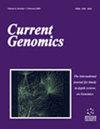Identification of Potential Pleiotropic Genes for Immune and Skeletal Diseases Using Multivariate MetaCCA Analysis
IF 1.8
4区 生物学
Q4 BIOCHEMISTRY & MOLECULAR BIOLOGY
引用次数: 1
Abstract
Background Immune and skeletal systems physiologically and pathologically interact with each other. Immune and skeletal diseases may share potential pleiotropic genetics factors, but the shared specific genes are largely unknown. Objective This study aimed to investigate the overlapping genetic factors between multiple diseases (including rheumatoid arthritis (RA), psoriasis, osteoporosis, osteoarthritis, sarcopenia, and fracture). Methods The canonical correlation analysis (metaCCA) approach was used to identify the shared genes for six diseases by integrating genome-wide association study (GWAS)-derived summary statistics. The versatile Gene-based Association Study (VEGAS2) method was further applied to refine and validate the putative pleiotropic genes identified by metaCCA. Results About 157 (p<8.19E-6), 319 (p<3.90E-6), and 77 (p<9.72E-6) potential pleiotropic genes were identified shared by two immune diseases, four skeletal diseases, and all of the six diseases, respectively. The top three significant putative pleiotropic genes shared by both immune and skeletal diseases, including HLA-B, TSBP1, and TSBP1-AS1 (p利用多变量MetaCCA分析鉴定免疫和骨骼疾病的潜在多向基因
背景免疫系统和骨骼系统在生理和病理上相互作用。免疫和骨骼疾病可能共享潜在的多效性遗传因素,但共享的特定基因在很大程度上是未知的。目的探讨多种疾病(包括类风湿性关节炎(RA)、银屑病、骨质疏松症、骨关节炎、少肌症和骨折)之间的重叠遗传因素。方法采用典型相关分析(metaCCA)方法,通过整合全基因组关联研究(GWAS)衍生的汇总统计,确定6种疾病的共享基因。基于多功能基因的关联研究(VEGAS2)方法被进一步应用于完善和验证metaCCA鉴定的假定多效性基因。结果两种免疫疾病、四种骨骼疾病和所有六种疾病分别鉴定出157个(p<8.19E-6)、319个(p>3.90E-6)和77个(p=9.72E-6)潜在的多效性基因。免疫和骨骼疾病共有的前三个重要的推定多效性基因,包括HLA-B、TSBP1和TSBP1-AS1(p<E-300),位于主要组织相容性复合体(MHC)区域。在VEGAS2分析中,通过metaCCA分析鉴定的77个推定多效性基因中有19个与至少一种疾病相关。具体而言,这19个公认的多效性基因中的大多数(18)与RA相关。结论metaCCA方法鉴定了一些免疫性和骨骼性疾病共有的多效性基因。这些发现有助于提高我们对免疫和骨骼疾病的共同遗传机制和信号通路的理解。
本文章由计算机程序翻译,如有差异,请以英文原文为准。
求助全文
约1分钟内获得全文
求助全文
来源期刊

Current Genomics
生物-生化与分子生物学
CiteScore
5.20
自引率
0.00%
发文量
29
审稿时长
>0 weeks
期刊介绍:
Current Genomics is a peer-reviewed journal that provides essential reading about the latest and most important developments in genome science and related fields of research. Systems biology, systems modeling, machine learning, network inference, bioinformatics, computational biology, epigenetics, single cell genomics, extracellular vesicles, quantitative biology, and synthetic biology for the study of evolution, development, maintenance, aging and that of human health, human diseases, clinical genomics and precision medicine are topics of particular interest. The journal covers plant genomics. The journal will not consider articles dealing with breeding and livestock.
Current Genomics publishes three types of articles including:
i) Research papers from internationally-recognized experts reporting on new and original data generated at the genome scale level. Position papers dealing with new or challenging methodological approaches, whether experimental or mathematical, are greatly welcome in this section.
ii) Authoritative and comprehensive full-length or mini reviews from widely recognized experts, covering the latest developments in genome science and related fields of research such as systems biology, statistics and machine learning, quantitative biology, and precision medicine. Proposals for mini-hot topics (2-3 review papers) and full hot topics (6-8 review papers) guest edited by internationally-recognized experts are welcome in this section. Hot topic proposals should not contain original data and they should contain articles originating from at least 2 different countries.
iii) Opinion papers from internationally recognized experts addressing contemporary questions and issues in the field of genome science and systems biology and basic and clinical research practices.
联系我们:info@booksci.cn
Book学术提供免费学术资源搜索服务,方便国内外学者检索中英文文献。致力于提供最便捷和优质的服务体验。
Copyright © 2023 布克学术 All rights reserved.
京ICP备2023020795号-1
 京公网安备 11010802042870号
京公网安备 11010802042870号
京ICP备2023020795号-1

Book学术文献互助群
群 号:481959085

 求助内容:
求助内容: 应助结果提醒方式:
应助结果提醒方式:
